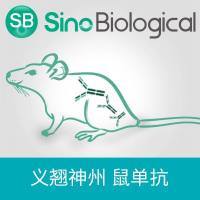Separation of Histone Variants and Post‐Translationally Modified Isoforms by Triton/Acetic Acid/Urea Polyacrylamide Gel Electrophoresis
互联网
- Abstract
- Table of Contents
- Materials
- Figures
- Literature Cited
Abstract
Due to their similarities in size and charge, complete resolution of histones by electrophoresis poses a considerable challenge. The addition of nonionic detergents to the traditional acetic acid/urea (AU) polyacrylamide gel electrophoresis (PAGE) system has afforded an excellent method to separate not only the different modified forms of histones, but also the primary sequence variant subtypes of selected histone species; it is widely used to separate histones with varying levels of acetylation. This unit describes the use of gels containing the nonionic detergent Triton X?100, referred to as Triton/acetic acid/urea (TAU) polyacrylamide gels, for analysis of histones. Also included are support protocols detailing several accessory techniques: assembly of gel plates for the TAU gel, preparation of histones from isolated nuclei in a solubilized form amenable to electrophoresis, and electrophoretic transfer of proteins from these gels to PVDF membranes.
Table of Contents
- Basic Protocol 1: Triton/Acetic Acid/Urea (TAU) Polyacrylamide Gel Electrophoresis for Analysis of Histones
- Support Protocol 1: Assembly of Gel Plates
- Support Protocol 2: Histone Isolation from Prepared Nuclei
- Support Protocol 3: Electrophoretic Transfer of TAU‐Polyacrylamide Gels
- Reagents and Solutions
- Commentary
- Literature Cited
- Figures
Materials
Basic Protocol 1: Triton/Acetic Acid/Urea (TAU) Polyacrylamide Gel Electrophoresis for Analysis of Histones
Materials
Support Protocol 1: Assembly of Gel Plates
Materials
Support Protocol 2: Histone Isolation from Prepared Nuclei
Materials
Support Protocol 3: Electrophoretic Transfer of TAU‐Polyacrylamide Gels
Materials
|
Figures
-

Figure 21.2.1 HeLa cells were synchronized with a double thymidine block procedure (2.7 mM thymidine; Peterson and Anderson, ; Knehr et al., ) and released into S phase for 3 hr. Released cells were then incubated 60 min in the absence (−) or presence (+) of okadaic acid (500 nM; Calbiochem), an inhibitor of cellular phosphatases. Acid‐soluble nuclear proteins and isolated histone H1 were subjected to electrophoresis in a TAU gel and analyzed by Coomassie blue staining. Lane M contains hyperphosphorylated H1 (pH1) from cells arrested in M phase by treatment with Colcemid (demecolcine; 0.06 µg/ml). The un‐ (Ac 0) and monoacetylated (Ac 1) isoforms of histone H4 are indicated. View Image -

Figure 21.2.2 HeLa cells were synchronized with a double thymidine block procedure and released into S phase for 4 hr (lane S). Isolated histone H1 was subjected to electrophoresis in a TAU gel; lane M contains hyperphosphorylated H1 from cells arrested in M phase by treatment with Colcemid (demecolcine). The gel was transferred electrophoretically to Immobilon‐P membrane (Millipore) and probed with antibodies specific for either phosphorylated H1 (a gift of Dr. C. David Allis) or total H1. Bound antibodies were detected by a secondary alkaline phosphatase color reaction. Bullets indicate the positions of the unphosphorylated forms of H1, as determined by staining the membrane with Ponceau S. The mono‐ (1), di‐ (2), tri‐ (3), and hyperphosphorylated (H) isoforms of H1 are indicated. View Image
Videos
Literature Cited
| Delcuve, G.P. and Davie, J.R. 1992. Western blotting and immunochemical detection of histones electrophoretically resolved on acid‐urea‐triton and sodium dodecyl sulfate‐polyacrylamide gels. Anal. Biochem. 200:339‐341 | |
| Franklin, S.G. and Zweidler, A. 1977. Non‐allelic variants of histones 2a, 2b, and 3 in mammals. Nature 266:273‐275 | |
| Knehr, M., Poppe, M., Enulescu, M., Eickelbaum, W., Stoehr, M., Schroeter, D. and Paweletz, N. 1995. A critical appraisal of synchronization methods applied to achieve maximal enrichment of HeLa cells in specific cell cycle phases. Exp. Cell Res. 217:546‐553 | |
| Mizzen, C.A. and Allis, C.D. 1998. Linking histone acetylation to transcriptional regulation. Cell. Mol. Life Sci. 54:6‐20. | |
| Panyim, S. and Chalkley, R. 1969. High resolution acrylamide gel electrophoresis of histones. Arch. Biochem. Biophys. 130:337‐346 | |
| Peterson, D.F. and Anderson, E.C. 1964. Quantity production of synchronized mammalian cells in suspension culture. Nature 203:642‐643 | |
| van Holde, K.E. 1988. Chromatin. Springer‐Verlag, New York. | |
| Waterborg, J.H. and Harrington, R.E. 1987. Western blotting of histones from acid‐urea‐triton‐ and sodium dodecyl sulfate‐polyacrylamide gels. Anal. Biochem. 162:430‐434 | |
| Wolffe, A.P. 1995. Chromatin. Academic Press, San Diego. | |
| Zweidler, A. 1978. Resolution of histones by polyacrylamide gel electrophoresis in presence of nonionic detergents. Methods Cell Biol. 17:223‐233 | |
| Key References | |
| Zweidler, 1978. See above. | |
| Initial description of Triton/acetic acid/urea polyacrylamide gel electrophoresis. | |
| Delcuve and Davie, 1978. See above. | |
| Description of the development of a method for efficiently transferring the Triton/acetic acid/urea polyacrylamide gels to membrane. |



![N-(3-Chlorophenyl)-N'-[5-[2-(thieno[3,2-d]pyrimidin-4-ylamino)ethyl]-2-thiazolyl]urea](https://img1.dxycdn.com/p/s14/2025/1010/765/0865776312945446791.jpg!wh200)

![DKFZ-PSMA-11,4,6,12,19-Tetraazadocosane-1,3,7-tricarboxylic acid, 22-[3-[[[2-[[[5-(2-carboxyethyl)-2-hydroxyphenyl]methyl](carboxymethyl)amin](https://img1.dxycdn.com/p/s14/2025/1009/171/0405943971658126791.jpg!wh200)



